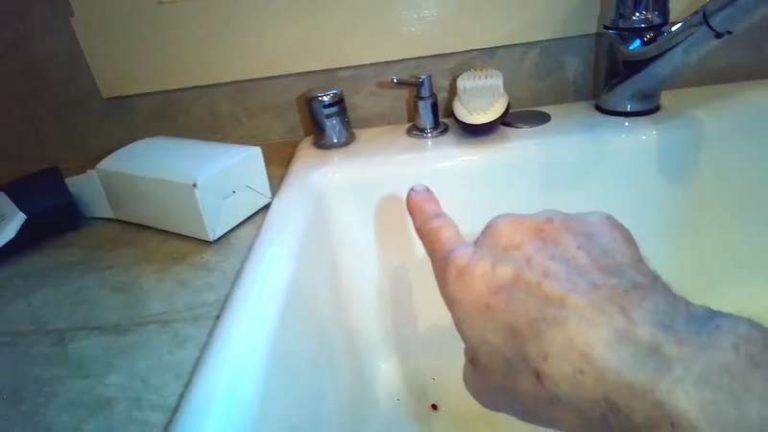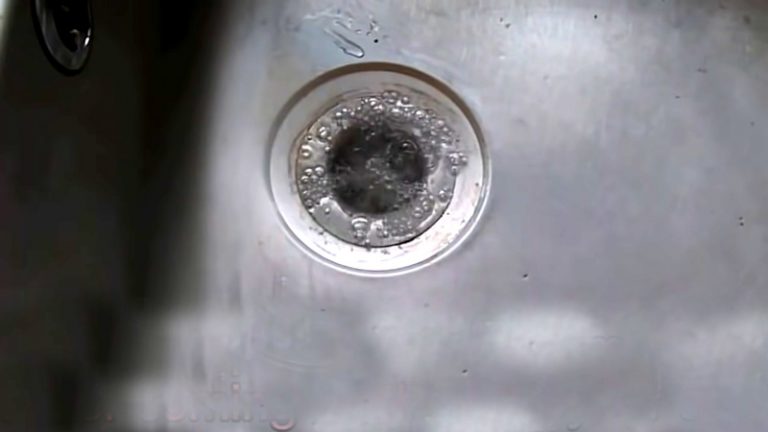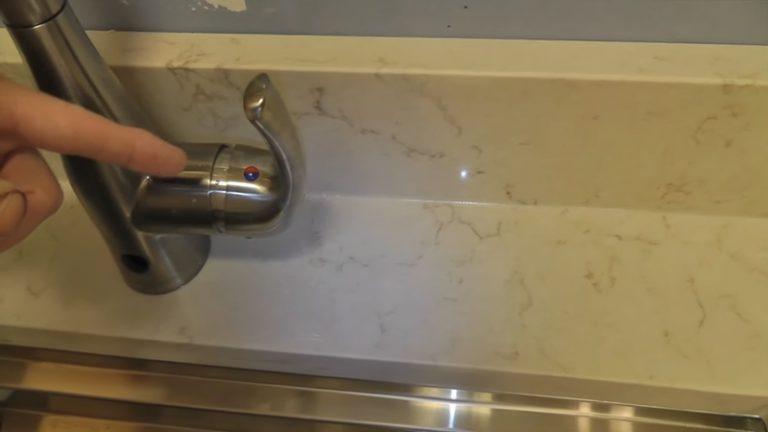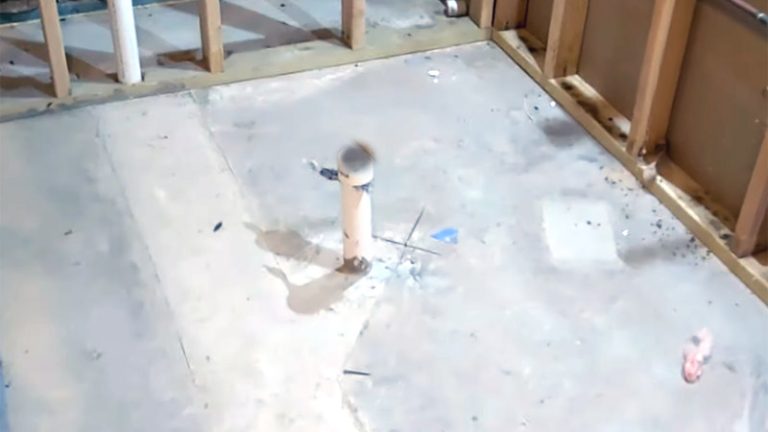Can You Use One Vent For The Whole Bathroom

Venting a bathroom sink shouldn’t be difficult, but it’s important to follow these guidelines: the vent pipe must be located 6-10 feet away from the drain inlet and all plumbing fixtures should connect to the main drain line at that distance.
Installing a ventilation pipe behind your bathroom sink is an easy way to improve air circulation and prevent flooding. Make sure you install your vent before connecting any other plumbing fixtures – this will ensure everything flows smoothly when you’re ready for installation.
Always consult with a professional when installing new piping or remodeling your home – they can help make sure everything works properly.
You'll Learn About
Can You Use One Vent For The Whole Bathroom?
Venting a sink and toilet is important to maintain sanitary conditions in your home. Make sure that the vent pipe is located at least 6-10 feet away from the sink drain line.
All plumbing fixtures must connect to the main drain line at that distance, as well as be installed behind the bathroom sink. The vent pipe should be installed so that it doesn’t protrude into any other areas of your home, such as through walls or ceilings.
Vent Pipe Must Be Located 6-10 Feet Away From Sink Drain
Vent pipes must be located 6-10 feet away from sinks and drain to avoid the possibility of backflow. Backflow can cause flooding, which is a problem in any bathroom – professional help is often needed to correct the issue.
A vent pipe should have an airtight seal around its circumference so no water escapes into your home. This means hiring a plumber or finding another way to do it yourself if you’re unsure how to do it correctly. Placing a vent pipe higher up will reduce the amount of water that backs up into your sink or drain.
However, make sure there’s enough clearance for plumbing fixtures as well. Always consult with professionals when renovating your bathroom. They know best what sort of precautions need to be taken in order not only to prevent issues but also to resolve them quickly if they arise
Fixtures Must Connect To The Main Drain Line
All plumbing fixtures must connect to the main drain line in that distance – this includes shower heads, toilets, and sinks. If you have a bathtub/shower combo, make sure the tub and shower fixture is on the same level – otherwise, water will go down one of them and overflow onto the floor.
Make sure all your plumbing connections are tight so there isn’t any leakage. Always turn off your taps before fixing or replacing anything; if you don’t, you could end up with a flooded bathroom (yuck). Finally, never use an extension cord when wiring – it’s dangerous and can cause fires.
Vent Pipe Should Be Installed Behind the Bathroom Sink
If you have a small bathroom, installing a vent pipe behind the sink can help to improve air circulation and reduce moisture build-up in the area. A vent pipe should be installed at least 16 inches from any plumbing or electrical fixtures, and it should be concealed with either a professional installer or by using caulking.
Make sure to consult your contractor if you’re not sure about where to install your vent pipe–they may be able to recommend an expert who can do the job correctly for you. Keep in mind that using too much ventilation can result in an unpleasant smell or humidity buildup, so make sure that your chosen solution meets your specific needs before proceeding with the installation.
Install a bathroom vent pipe as soon as possible if you want to avoid problems down the road: improper installation could lead to water damage, faulty equipment, and more costly repairs later on
How many vents do you need for two bathrooms?
To exhaust gases from the bathroom, you’ll need an exhaust fan. Exhaust fans come in a variety of styles and sizes to fit any bathroom needs. You can find them cut into ceilings or installed as exterior appliances.
Make sure to get proper ventilation by routing the exhaust hose through a hole in the ceiling or using an existing one.
Can I use same vent for shower and toilet?
You may be able to use the same vent for both a shower and toilet, but it’s best to check with your homeowner’s insurance company first. Some policies only allow one type of venting in a home, so you’ll need to make sure that your specific policy allows this before starting any renovations.
You can use the same vent to route both hot and cold air through your bathroom. Make sure that the toilet is the last fixture connected to the wet vent before routing any air ducts. Keep vents clear of furniture and other objects so they don’t get in the way. The wet vent is designed specifically for handling multiple fixtures in your home such as a shower and a toilet at the same time.
However, make sure each fixture uses its own independent intake and exhaust system to avoid cross-contamination between fixtures. When installing or moving an appliance, always be mindful of how it will affect your ventilation system by keeping vents free from obstructions like furniture and appliances.
Does every bathroom fixture need a vent?
Every bathroom fixture that requires plumbing needs a vent to prevent air from entering your plumbing system and causing problems. A trap prevents the entry of dirt, dust, and other objects into your home’s plumbing system which can cause damage or health hazards.
Properly installed and maintained vents keep you safe by preventing moisture build-up in walls or ceilings, as well as keeping harmful gases out of your home. Follow building code regulations to ensure compliance with safety standards before installing any type of ventilation device in your home.
Can two toilets use the same vent?
Yes, two toilets can use the same vent. This is useful if you have a small bathroom and want to conserve space. Just make sure the vents are large enough for both toilets to fit through without obstruction.
- Two toilets can use the same vent if they are situated in a separate room and the stack location matches. It is important to make sure that your toilet plumbing matches up with the stack location so that no water leaks into or from your second toilet.
- You must also ensure that there are separate waste lines for each side of the bathroom as two toilets using the same vent will create an imbalance in pressure. This could lead to sewage flooding down into other parts of your home or building.
- You will need to install two vents on either side of your roof – one for each toilet – in order to allow airflow between them while preventing odors and moisture build-up.
How many vents does a bathroom need?
A bathroom needs one vent and one soil stack to ensure proper ventilation. The vents should be high enough to clear the top of the toilet tank, shower head, and any fixtures directly above them-including a light fixture or mirror.
The stack should exit at the highest point in your home possible-above ceilings and below eaves. If you have more than one bathroom, each must have its own vent and soil stack
Do I need a separate vent for each bathroom fan?
If you have more than one bathroom in your home, it’s important to consider installing a separate vent for each fan. This will help keep the rooms evenly heated and avoid any negative effects on humidity levels.
Each Fan Must Have Its Own Vent
Adding an additional fan to your duct system without adding a separate vent will cause the fans to share air, which can result in problems such as reduced airflow and overheating. To avoid this issue, each fan should have its own exhaust duct.
The size of the ducts should also be oversized for every additional fan added, and all fans must have back-draft dampers installed to prevent cross-flow between them.
Duct Size Should Be Over-Sized
If you are adding more than one fan to your system, you need to make sure that the duct size is large enough to accommodate the extra flow capacity needed by all of them. If not, then potential issues with airflow and overheating may occur.
Both Fans Must Have Back-Draft Damper Installed
To ensure proper ventilation and prevent cross-flow between fans, both fans must be equipped with backdraft damper units installed at their outlet ports.
This prevents air from being forced through either fan if it becomes blocked or malfunctioning.
System Capacity Is Based On the Number Of Fans
Your system’s total capacity is based on how many fans are in use rather than how much air they are able to move per minute. This means that even if there are only two fans in use, your system will still be able to move enough air for four people.
In order for your home theater or other equipment room to perform optimally under high loads (like when watching a movie), it’s important that you install as many ceiling-mounted A/C units as possible.
To Recap
Using one vent for the entire bathroom is possible, but it must be properly sized and installed to ensure adequate airflow. A single vent can serve multiple fixtures, such as the toilet, sink, and shower, as long as it meets local plumbing codes. Proper venting prevents sewer gases from entering your home and helps maintain proper drainage.
If you’re working on bathroom plumbing, it’s worth exploring the 1975 septic tank design to understand how older systems function. Additionally, if your home has clay pipes under the basement floor, they may be contributing to the issue due to their susceptibility to cracks and root intrusion. For modern solutions, consider the benefits of PEX plumbing in exterior walls.






